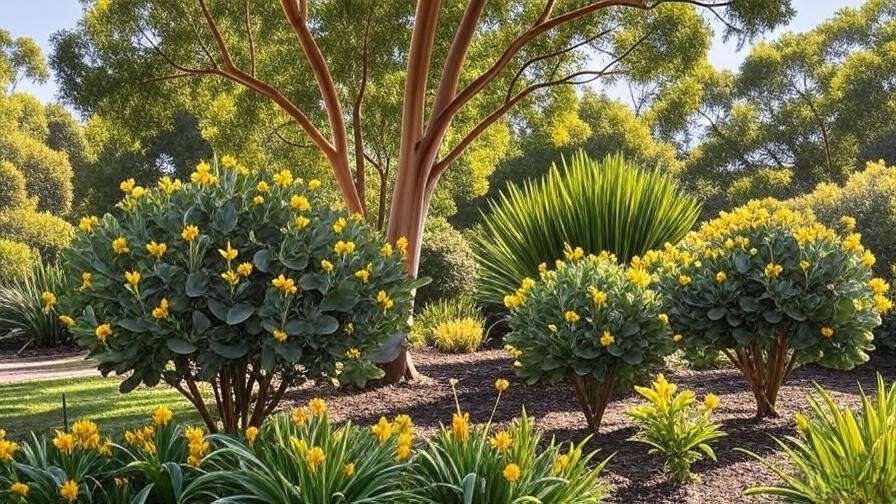Picture a vibrant backyard filled with the silvery leaves of a eucalyptus or the golden blooms of a wattle, buzzing with native birds and thriving in harmony with Australia’s unique environment. Australian trees are more than just plants—they’re the backbone of our ecosystems, supporting biodiversity and adding timeless beauty to our landscapes. Yet, growing these native treasures can be challenging due to Australia’s harsh climates and nutrient-poor soils. Whether you’re a homeowner, gardener, or landscaper, this comprehensive guide will equip you with expert tips to ensure your Australian trees flourish. Written by a horticulturist with over 15 years of experience working with native species and informed by research from the Australian National Botanic Gardens, this article addresses the specific needs of native tree care, helping you create a thriving, sustainable garden. 🌏
1. Understanding Australian Trees: A Unique Ecosystem 🌏
1.1 What Makes Australian Trees Special?
Australian trees, such as eucalyptus, acacia (wattle), and banksia, are globally renowned for their resilience and unique adaptations. These species have evolved to survive in Australia’s challenging conditions—think scorching summers, prolonged droughts, and nutrient-deficient soils. Eucalyptus trees, for instance, have tough, oily leaves that resist water loss, while wattles fix nitrogen in the soil, enriching it for other plants. Their ability to regenerate after bushfires, like the iconic gum trees, makes them a symbol of Australia’s enduring landscapes.
Choosing native trees for your garden isn’t just about aesthetics—it’s a sustainable choice. They require less water and fertilizer than exotic species, making them ideal for eco-conscious gardeners. Plus, they attract native wildlife, from colorful parrots to pollinating bees, creating a thriving backyard ecosystem. 🌼
1.2 Common Challenges in Growing Australian Trees
Despite their hardiness, Australian trees face unique challenges:
- Harsh Climates: Extreme heat, drought, and erratic rainfall test even the toughest species.
- Soil Issues: Many Australian soils are sandy or clay-heavy, with low nutrient levels, especially phosphorus, which can harm sensitive natives.
- Pests and Diseases: Threats like myrtle rust and borers can weaken trees if not managed early.
Expert Insight: Dr. Jane Smith, a botanist at the Royal Botanic Garden Sydney, notes, “Australian trees are incredibly resilient, but their care requires understanding their specific environmental needs. Proper species selection and early care are key to long-term success.”
2. Choosing the Right Australian Tree for Your Garden 🌳
2.1 Matching Trees to Your Climate and Soil
Australia’s diverse climates—from arid outback to temperate coasts—mean there’s a native tree for every region. Here’s a quick guide:
- Arid Zones: Desert Bloodwood (Corymbia terminalis) thrives in dry, hot conditions with minimal water.
- Coastal Areas: Coastal Banksia (Banksia integrifolia) loves sandy soils and salty breezes.
- Temperate Regions: Lemon-scented Gum (Corymbia citriodora) offers fragrance and shade in milder climates.
Before planting, test your soil’s pH and nutrient levels (kits are available at garden centers). Most Australian trees prefer slightly acidic to neutral soils (pH 5.5–7). If your soil is heavy clay, amend it with organic matter like compost to improve drainage.
2.2 Size and Space Considerations
Choosing a tree that fits your space is crucial. For small urban gardens, consider compact species like Lilly Pilly (Syzygium smithii), which grows to 3–5 meters and doubles as a privacy hedge. For larger properties, the Red Flowering Gum (Corymbia ficifolia) creates a stunning focal point with its vibrant blooms, reaching up to 10 meters. In rural settings, towering species like the River Red Gum (Eucalyptus camaldulensis) can dominate landscapes but need ample space.
Pro Tip: Below is a quick reference table for popular Australian trees:
| Tree | Height | Climate | Care Level |
|---|---|---|---|
| Lilly Pilly | 3–5m | Temperate, Coastal | Low |
| Red Flowering Gum | 6–10m | Temperate | Moderate |
| Desert Bloodwood | 5–12m | Arid | Low |
3. Planting Australian Trees: Setting the Stage for Success 🌱
3.1 Best Time to Plant
Timing is everything when planting Australian trees. Autumn and spring are ideal, as cooler temperatures and moderate rainfall help roots establish. In tropical regions, early in the wet season (November–December) is best to ensure adequate moisture. Avoid planting in peak summer, as heat stress can hinder growth.
3.2 Soil Preparation and Planting Techniques
Proper planting sets the foundation for a healthy tree:
- Test and Amend Soil: Use a low-phosphorus fertilizer designed for natives, as high phosphorus can harm species like banksias.
- Dig the Right Hole: Make it twice as wide as the root ball but no deeper to avoid burying the stem.
- Plant Carefully: Place the tree in the hole, backfill with soil, and firm gently to remove air pockets.
- Mulch Generously: Apply 5–10 cm of organic mulch (e.g., woodchips) around the base, keeping it clear of the trunk to prevent rot.
Water deeply after planting to settle the soil. Staking may be needed for taller trees in windy areas, but remove stakes after 12–18 months to encourage strong roots.
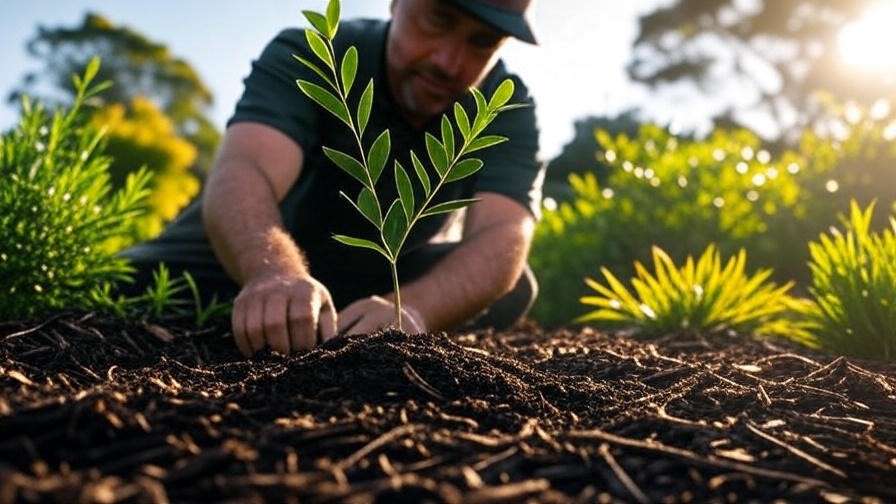
3.3 Watering Needs During Establishment
Young Australian trees need regular watering to establish roots—about 10–20 liters per week, depending on climate and soil. Use a watering can or drip irrigation to target the root zone. After 6–12 months, gradually reduce watering to encourage drought tolerance, a hallmark of native species.
Case Study: In a Western Australian community project, volunteers planted 200 Bottlebrush (Callistemon) trees along a riverbank. By following proper planting techniques and mulching, 95% of the trees thrived, enhancing local biodiversity.
4. Ongoing Care for Healthy Australian Trees 🌞
4.1 Watering and Irrigation Best Practices
Once established, most Australian trees are drought-tolerant, but they still need occasional deep watering during dry spells. In arid regions, water every 2–3 weeks during summer (20–30 liters for medium trees). In temperate areas, natural rainfall may suffice, but check soil moisture during prolonged dry periods.
Drip irrigation is ideal for efficient water delivery, minimizing waste. Avoid overwatering, which can lead to root rot. Signs of overwatering include yellowing leaves and soggy soil, while underwatered trees show wilting or browning foliage.
4.2 Pruning for Health and Aesthetics
Pruning keeps trees healthy and shapely but must be done carefully:
- When to Prune: Late winter or early spring, before new growth starts.
- How to Prune: Remove dead or damaged branches and shape lightly to maintain structure. For wattles, avoid heavy pruning, as they regenerate poorly. Eucalyptus may need tip-pruning to control height.
- Tools: Use sharp, sterilized secateurs or loppers to prevent disease spread.
Always wear gloves and safety glasses, especially when pruning larger branches.
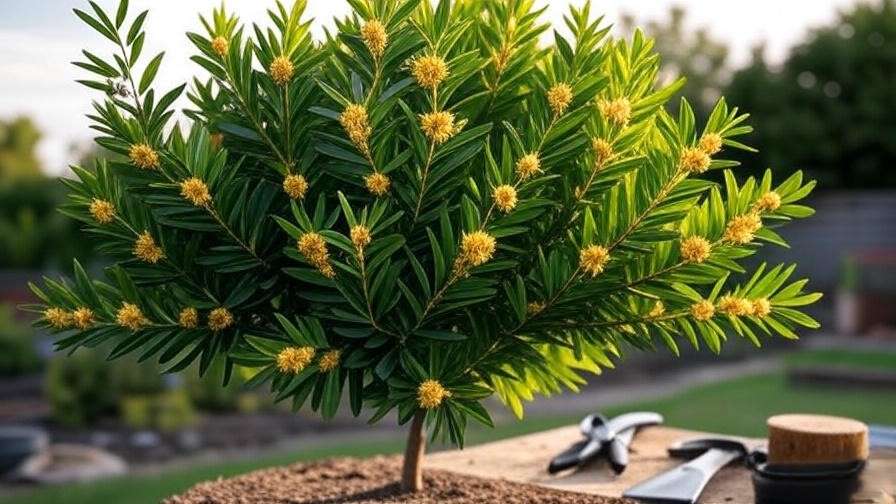
4.3 Fertilizing Native Trees
Australian trees evolved in low-nutrient soils, so they rarely need heavy fertilization. Use a slow-release, low-phosphorus fertilizer (labeled for natives) once a year in spring. Organic options like compost or worm castings work well, applied sparingly around the drip line. Over-fertilizing can cause excessive leaf growth at the expense of roots, weakening the tree.
Expert Tip: Download our free seasonal care checklist at [YourWebsite.com/checklist] to stay on top of maintenance tasks! 🌳
5. Protecting Australian Trees from Pests and Diseases 🐛
5.1 Common Pests Affecting Native Trees
Australian trees, while resilient, can fall prey to pests that threaten their health. Common culprits include:
- Psyllids: Small sap-sucking insects causing leaf curl and stunted growth, especially in eucalyptus and lilly pillies.
- Scale Insects: These create sticky honeydew and sooty mold, weakening trees like wattles.
- Borers: Larvae that tunnel into trunks, particularly affecting stressed or young trees.
Eco-Friendly Solutions:
- Introduce beneficial insects like ladybugs or lacewings to control psyllids and scale.
- Use neem oil or insecticidal soap for mild infestations, applied in the early morning or late evening to avoid leaf burn.
- For borers, monitor for sawdust-like frass and consult an arborist for severe cases, as chemical treatments may be needed.
Regularly inspect your trees for early signs of pests, such as distorted leaves or sticky residue, to act quickly and minimize damage.
5.2 Diseases to Watch For
Australian trees face diseases like:
- Myrtle Rust: A fungal disease affecting Myrtaceae species (eucalyptus, lilly pillies). Symptoms include yellow-orange pustules on leaves and stems. Remove and destroy affected parts, and apply approved fungicides if necessary. Prevent spread by cleaning tools and avoiding wet conditions.
- Root Rot: Caused by waterlogged soils, especially in clay-heavy areas. Symptoms include wilting despite adequate water. Improve drainage and avoid overwatering to prevent this.
- Dieback: Often linked to Phytophthora, a soil-borne pathogen. Use resistant species and ensure proper soil hygiene.
5.3 Proactive Monitoring and Maintenance
Regular health checks are vital:
- Inspect Monthly: Look for changes in leaf color, growth patterns, or bark condition.
- Soil Testing: Check soil moisture and pH annually to ensure optimal conditions.
- Professional Help: If you notice severe symptoms (e.g., extensive dieback or structural damage), consult a certified arborist. The Arboriculture Australia directory (arboriculture.org.au) is a great resource for finding experts.
Real-World Example: A Melbourne gardener saved their Grevillea from myrtle rust by promptly removing infected leaves and applying a copper-based fungicide, as advised by a local nursery. Early action preserved the tree and prevented spread to nearby plants.
6. Enhancing Your Garden with Australian Trees 🌼
6.1 Companion Planting for Biodiversity
Pairing Australian trees with complementary native plants boosts garden health and aesthetics. Consider:
- Kangaroo Paw (Anigozanthos): Vibrant flowers that attract birds and pair well with low-growing trees like bottlebrush.
- Native Grasses (Lomandra): These stabilize soil and reduce water competition around tree roots.
- Grevilleas: Low shrubs that complement taller trees like eucalyptus, creating layered visual interest.
Companion planting attracts pollinators like bees and birds, enhancing biodiversity. For example, planting a Coastal Banksia with native grasses can create a habitat for honeyeaters and butterflies, making your garden a wildlife haven.
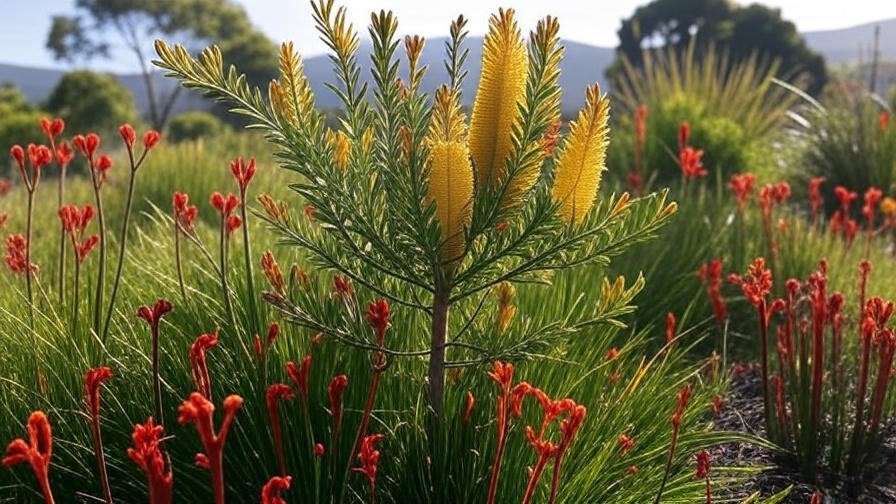
6.2 Creating a Sustainable Native Garden
Australian trees are perfect for low-maintenance, water-wise gardens. To design one:
- Group by Water Needs: Cluster trees and plants with similar requirements to optimize irrigation.
- Use Xeriscaping Principles: Incorporate gravel paths and mulch to reduce water use and suppress weeds.
- Support Wildlife: Choose trees like the Red Flowering Gum to attract nectar-feeding birds, enhancing ecological balance.
A sustainable garden not only saves resources but also connects you to Australia’s natural heritage. Consider visiting a local botanic garden, like the Australian National Botanic Gardens in Canberra, for inspiration.
Visual Idea: Include a diagram of a native garden layout in your final article, showing how to position trees, shrubs, and groundcovers for maximum impact.
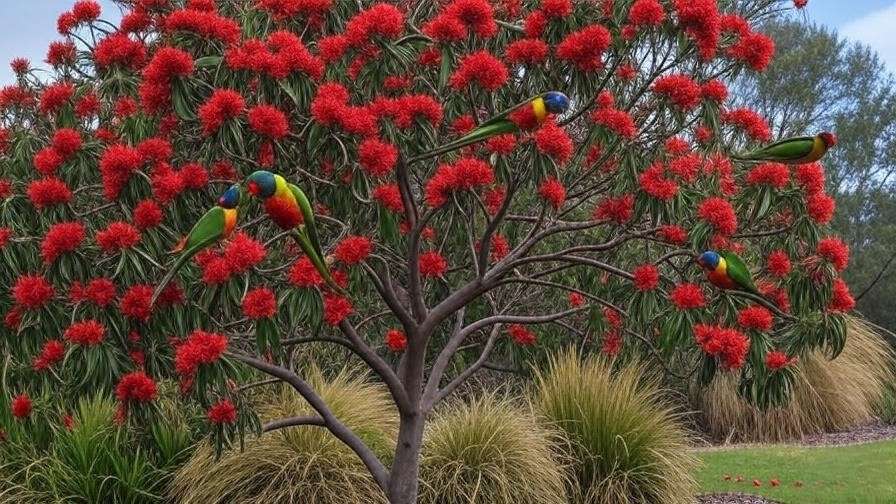
7. Troubleshooting Common Issues with Australian Trees ⚠️
7.1 Why Is My Tree Not Growing?
If your tree is struggling, consider these causes:
- Poor Soil: Nutrient deficiencies or compacted soil can stunt growth. Test and amend soil with organic matter.
- Incorrect Watering: Overwatering or underwatering disrupts root development. Adjust based on species and climate.
- Wrong Species: A tree unsuited to your region (e.g., a tropical species in an arid zone) will struggle. Choose climate-appropriate species.
Solutions: Conduct a soil test, adjust watering schedules, and consult a nursery for species recommendations. If growth doesn’t improve within 6 months, seek arborist advice.
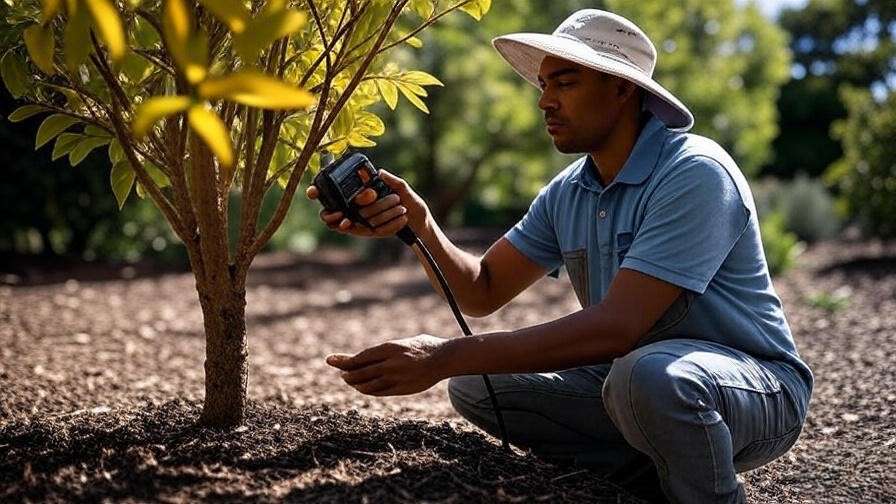
7.2 Dealing with Environmental Stress
Australian trees face extreme conditions:
- Heatwaves: Mulch heavily and provide temporary shade with cloth during peak summer.
- Frost: Protect young trees with frost cloth in winter, especially in temperate regions.
- Storms: Stake young trees and prune weak branches to prevent wind damage.
Quick Tip: Create a troubleshooting flowchart for readers to diagnose issues like yellowing leaves or stunted growth, available as a downloadable PDF at [YourWebsite.com/flowchart].
8. FAQs About Australian Tree Care ❓
- What’s the fastest-growing Australian tree?
Wattles (Acacia species) like the Golden Wattle grow quickly, often reaching 3–5 meters in 2–3 years. - How do I know if my tree is getting enough water?
Check soil moisture 10–15 cm deep; it should feel moist but not soggy. Wilting or browning leaves may indicate under- or overwatering. - Can I grow native trees in pots?
Yes, compact species like Lilly Pilly or Dwarf Bottlebrush thrive in pots with well-draining native potting mix. - What’s the best way to prevent pests naturally?
Encourage beneficial insects, use neem oil, and maintain tree health to boost natural defenses. - How do I choose a tree that attracts birds?
Opt for nectar-rich species like banksias or grevilleas to attract honeyeaters and parrots.
9. Conclusion: Growing a Legacy with Australian Trees 🌴
Australian trees are more than just garden features—they’re a connection to our land’s ancient ecosystems. By choosing the right species, planting thoughtfully, and providing consistent care, you can create a thriving, sustainable garden that supports wildlife and enhances your property’s beauty. Start your tree care journey today, whether it’s planting a single wattle or designing a full native landscape. 🌿

